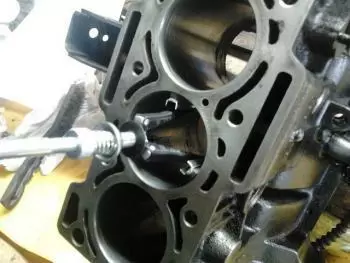
The displacement of a heat engine indicates the amount of gas (a mixture of air and fuel) that can be burned in the cylinders.
In reality, the displacement does not reflect the contents of the cylinders, but only the volume of the part that is displaced by the pistons. Above the highest position of the cylinder, a small volume of the combustion chamber remains that is not included. Below the lower position of the piston is a part of the cylinder that serves to guide the piston and that is also not included when calculating the displacement.
A unit displacement heat engine is an engine that has a single cylinder, such as chainsaw engines. At the same time, they can have multiple cylinders, up to 12 or 16, in the case of cars or airplanes.
Engines with more than one cylinder have a so-called engine block. In the engine block the cylinders are cast in a single block of aluminum or cast iron.
What is the cylinder of an engine?
The cylinder of an engine is the space where fuel deflagration occurs and a piston moves. The name of cylinder comes from its practically cylindrical shape.
The function of the cylinder is to act as a combustion chamber and as a guide when the piston rises and falls.
The inside of a cylinder undergoes great wear with the piston. In order to extend the useful life there are two techniques: you can make a surface treatment to the metal of the block or place a sleeve (dry or wet) inside to absorb the wear with the piston.
Engine cylinders are characterized by cylinder bore and piston stroke. The piston stroke is the distance between its high dead center and its low dead center. These parameters determine the displacement or volume displaced by the movement of the pistons.
The compression rate is the ratio of the internal volume of the cylinder when the piston is at bottom dead center and the volume at top dead center.
How is displacement related to the power of an engine?
The power of an internal combustion engine varies depending on the cylinder diameter and the total number of cylinders. That is, the amount of air and fuel that is consumed inside the cylinder. Hence, the cylinders that allow to accommodate a greater volume of fuel have more power.
The total displacement of a heat engine is the sum of the volume displaced by the piston in each cylinder. Obviously, the fuel consumption is higher the higher the displacement.
Displacement is generally expressed cubic centimeters for mopeds and motorcycles. For larger engines, such as cars, boats, and stationary applications, the calculation is usually in liters (1000cc = 1 liter).